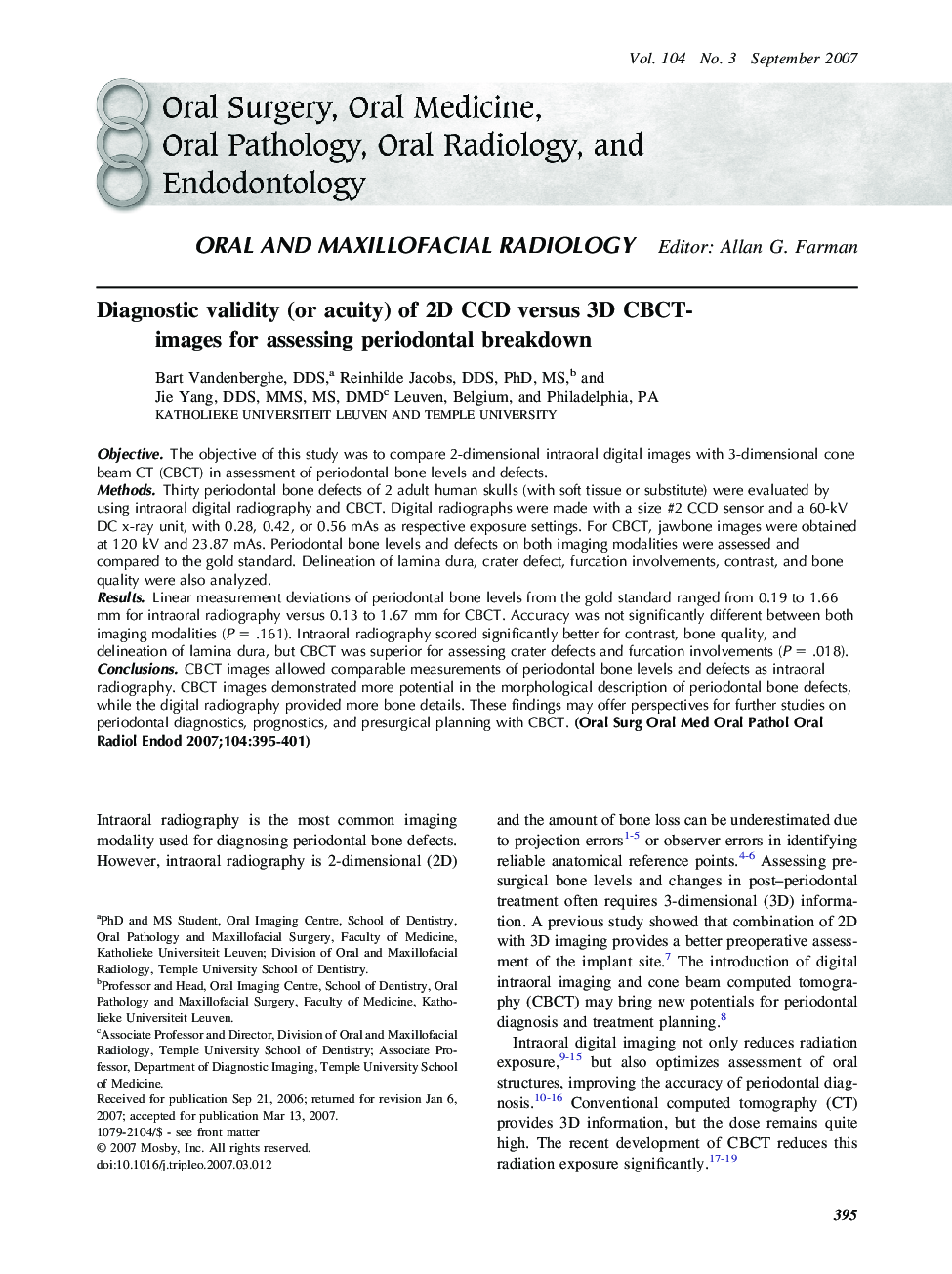| Article ID | Journal | Published Year | Pages | File Type |
|---|---|---|---|---|
| 3169254 | Oral Surgery, Oral Medicine, Oral Pathology, Oral Radiology, and Endodontology | 2007 | 7 Pages |
ObjectiveThe objective of this study was to compare 2-dimensional intraoral digital images with 3-dimensional cone beam CT (CBCT) in assessment of periodontal bone levels and defects.MethodsThirty periodontal bone defects of 2 adult human skulls (with soft tissue or substitute) were evaluated by using intraoral digital radiography and CBCT. Digital radiographs were made with a size #2 CCD sensor and a 60-kV DC x-ray unit, with 0.28, 0.42, or 0.56 mAs as respective exposure settings. For CBCT, jawbone images were obtained at 120 kV and 23.87 mAs. Periodontal bone levels and defects on both imaging modalities were assessed and compared to the gold standard. Delineation of lamina dura, crater defect, furcation involvements, contrast, and bone quality were also analyzed.ResultsLinear measurement deviations of periodontal bone levels from the gold standard ranged from 0.19 to 1.66 mm for intraoral radiography versus 0.13 to 1.67 mm for CBCT. Accuracy was not significantly different between both imaging modalities (P = .161). Intraoral radiography scored significantly better for contrast, bone quality, and delineation of lamina dura, but CBCT was superior for assessing crater defects and furcation involvements (P = .018).ConclusionsCBCT images allowed comparable measurements of periodontal bone levels and defects as intraoral radiography. CBCT images demonstrated more potential in the morphological description of periodontal bone defects, while the digital radiography provided more bone details. These findings may offer perspectives for further studies on periodontal diagnostics, prognostics, and presurgical planning with CBCT.
